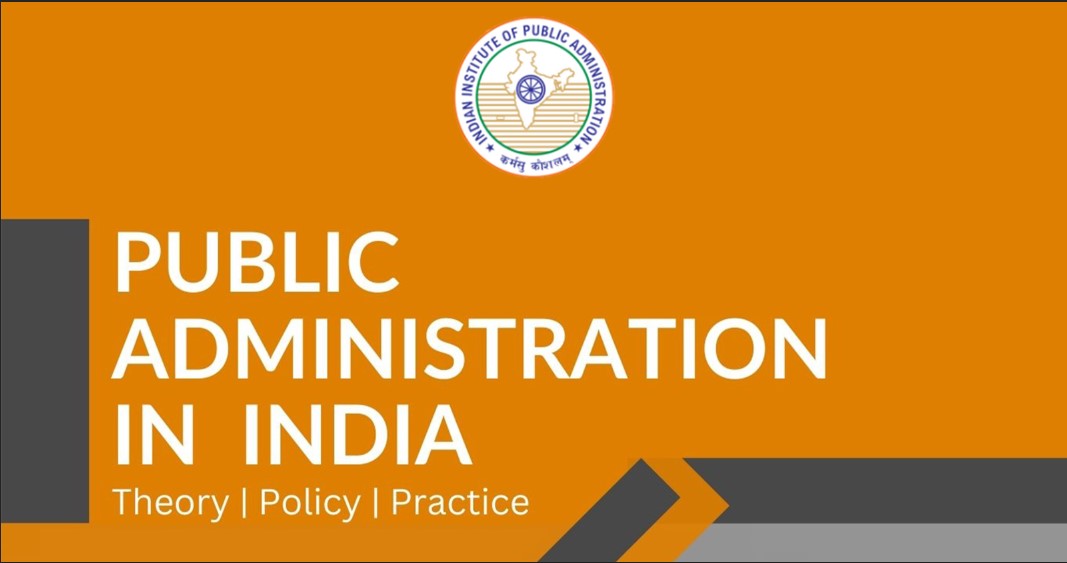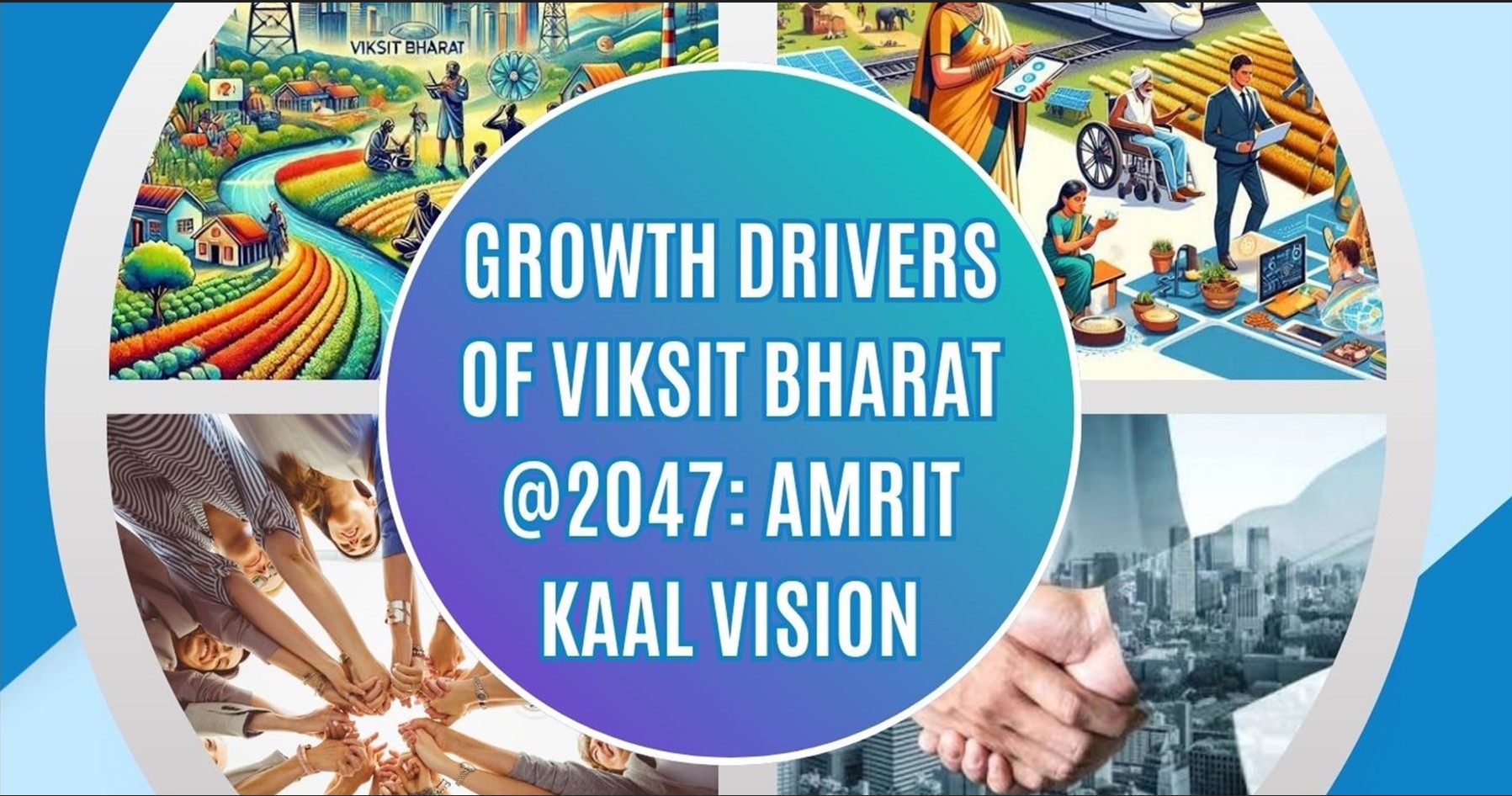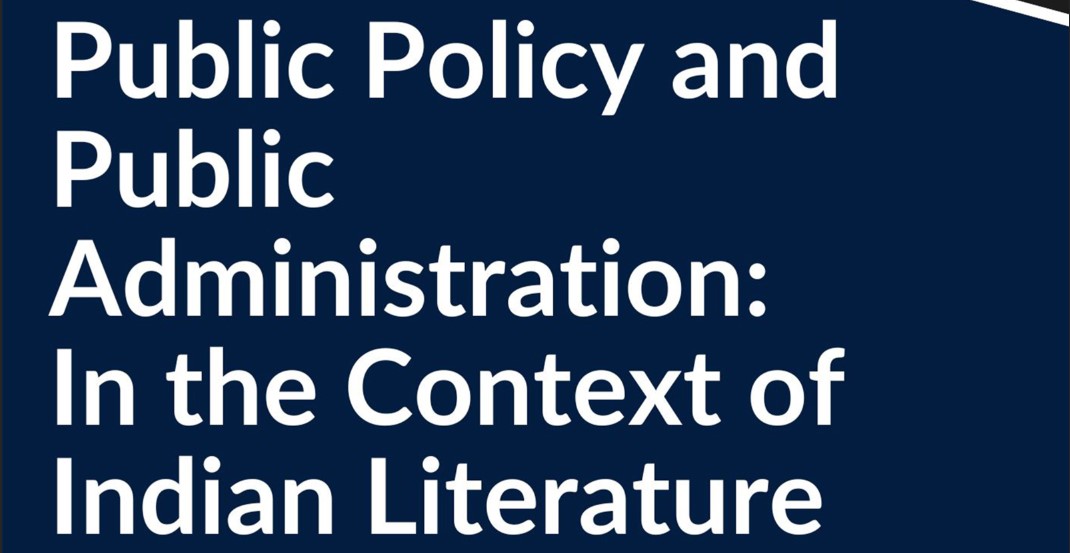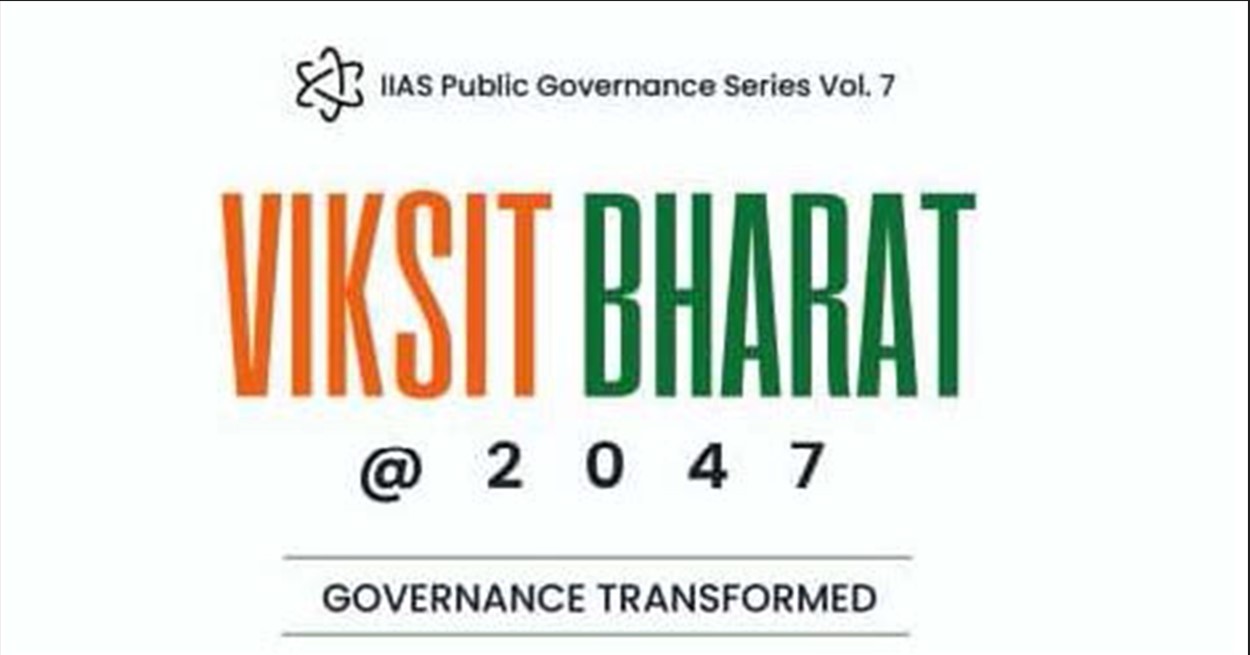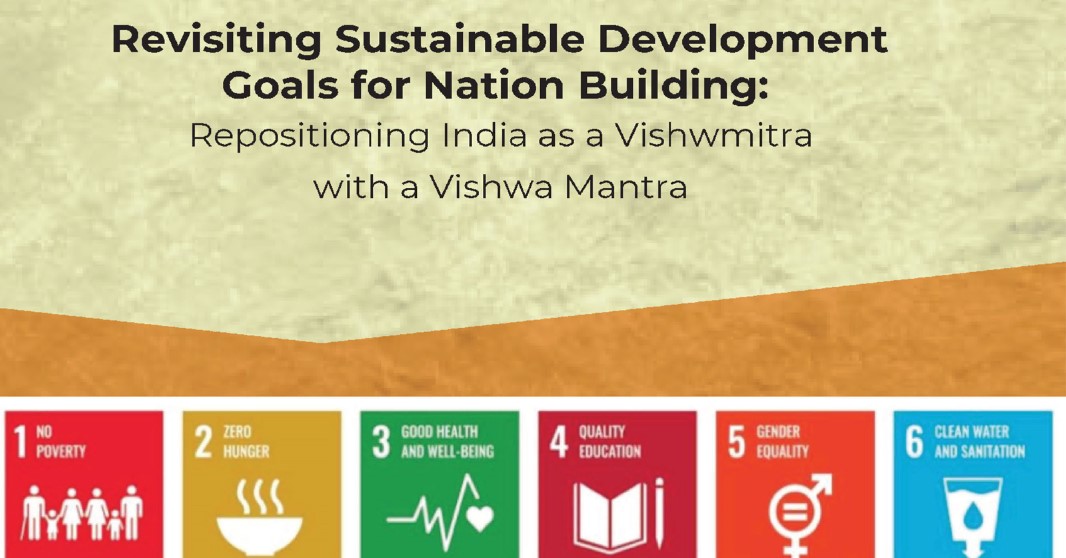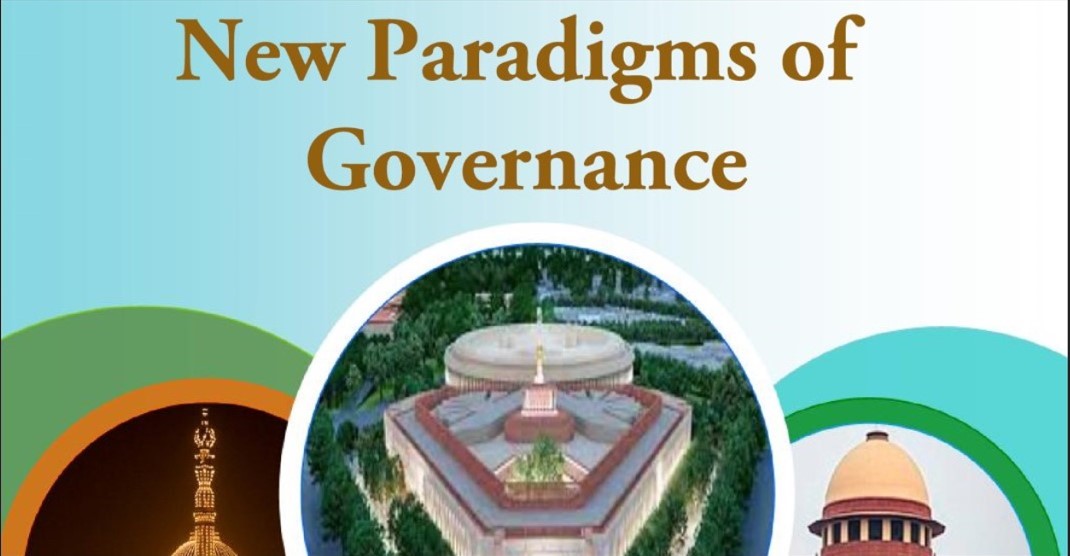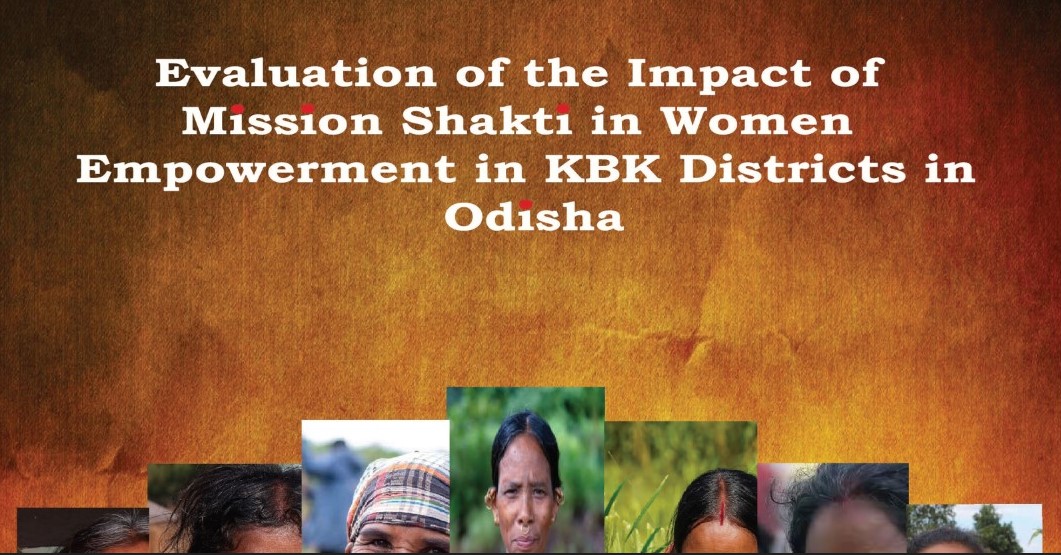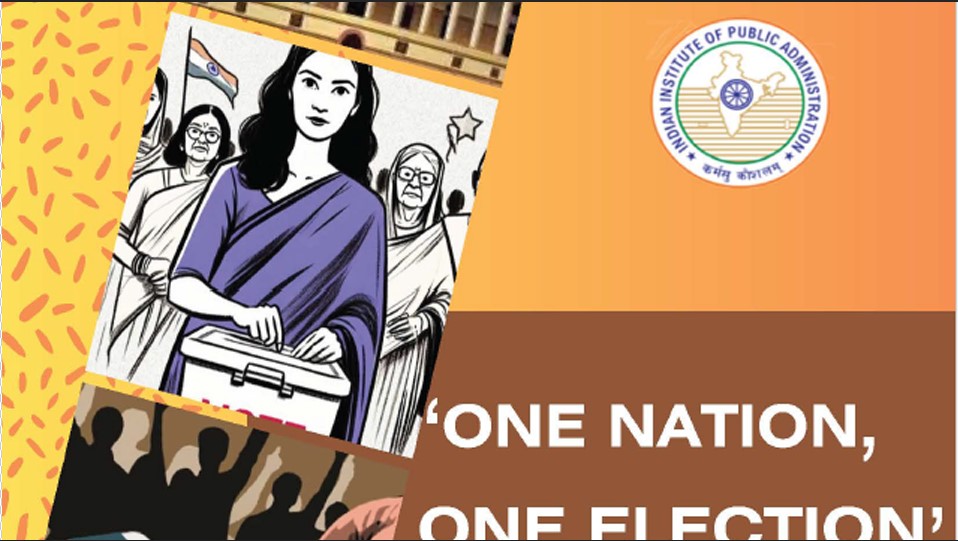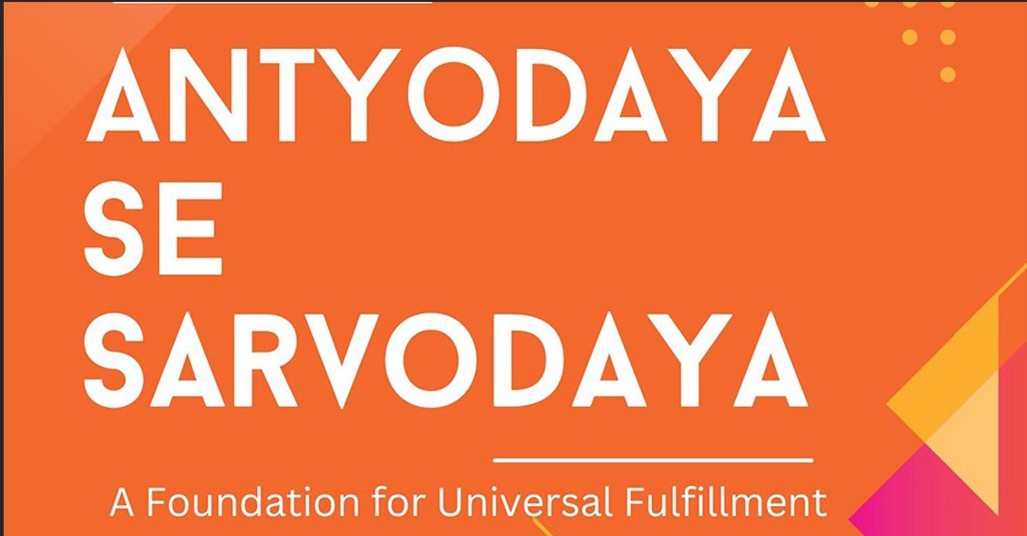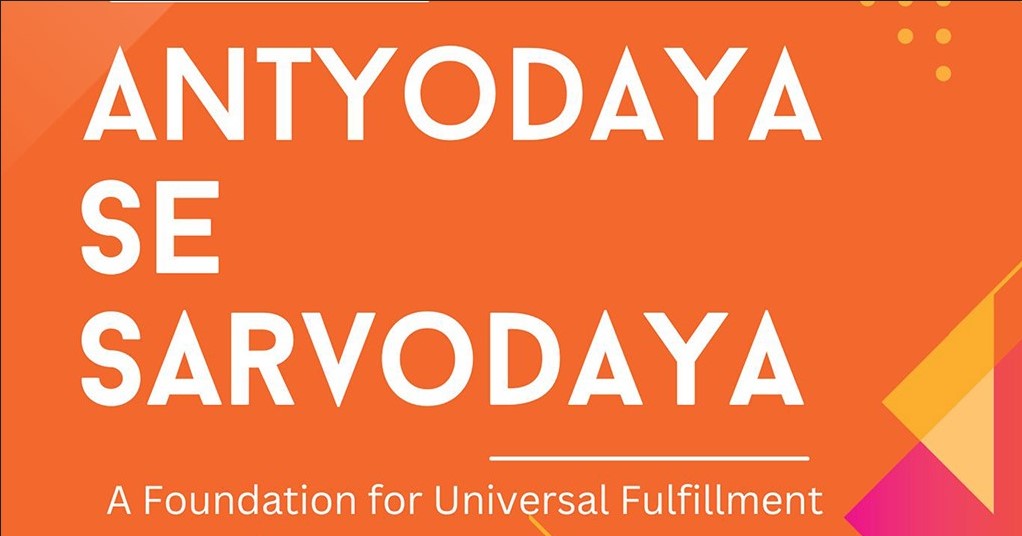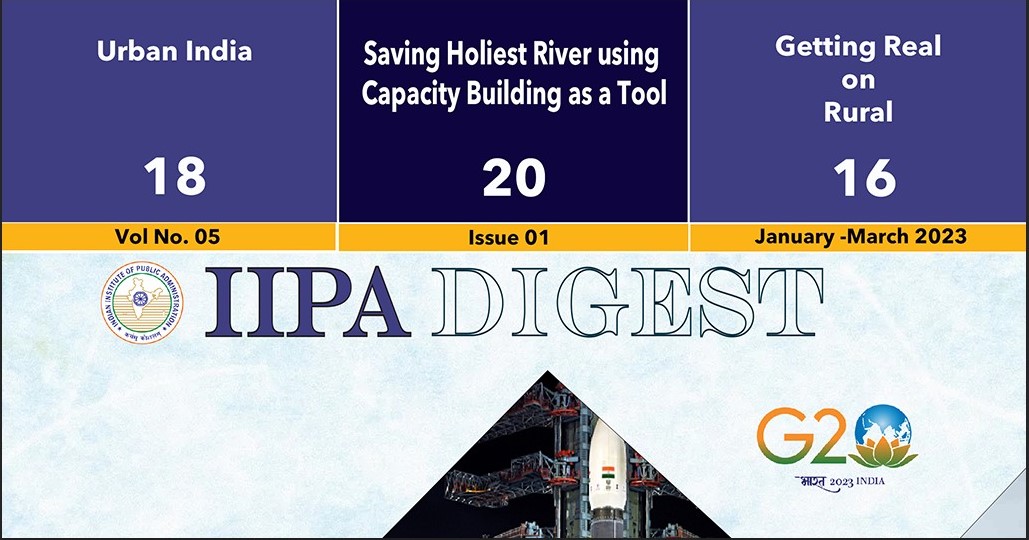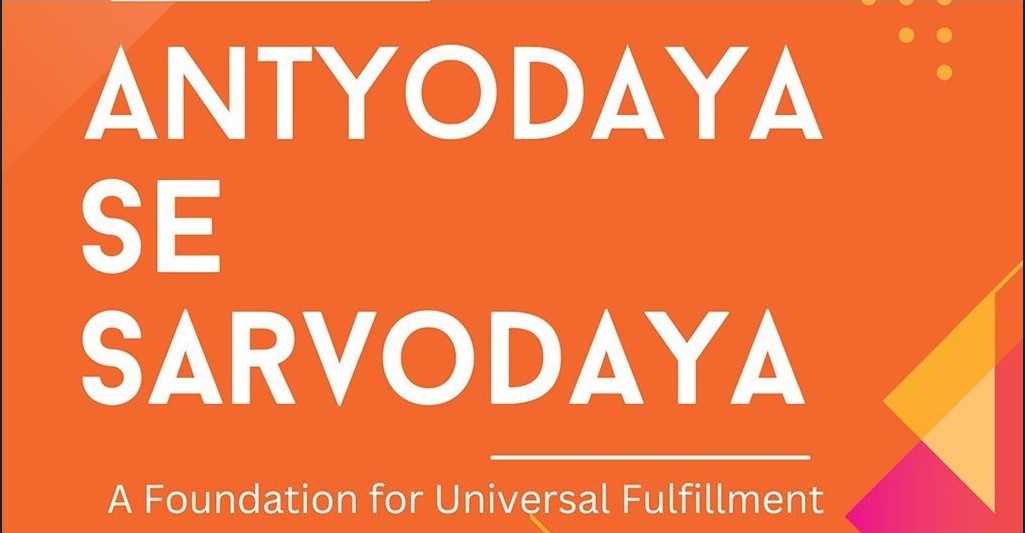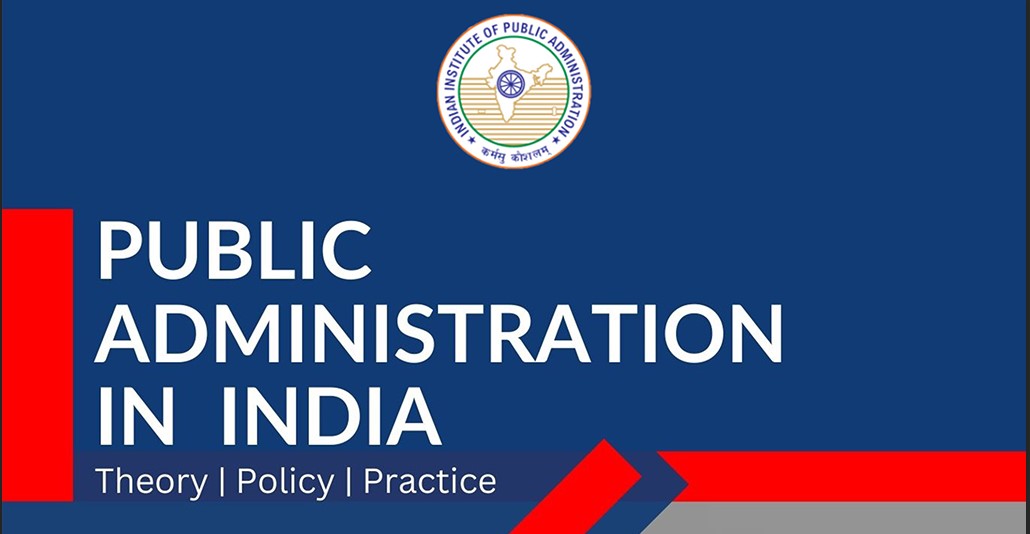Public Service Delivery
Abstract
Neoliberal policies pursued by India since 1990s have created a space for private enterprises hitherto occupied by the state entities, unshackled the existing enterprises and introduced reforms to facilitate private initiative. This chapter looks into the ecosystem of the private sector in general and the developments in three specific sectors- urban mobility, water supply and housing, to draw lessons for charting a road map for the state action to achieve the target of making India a developed nation by 2047.
The three sectors have been chosen as they are critical to productivity. If these services are provided efficiently, people can focus on their work, leading to enhanced productivity. Two of the three services chosen are also critical for the dignified existence of the citizens. Moreover, the three sectors have seen the entry of many private players- domestic as well as foreign, in recent times.
Introduction
India chose the mixed economy model post-independence to reconstruct and develop its economy, implying simultaneous presence of private sector. However, the space for the private sector was very limited. Industrial Policy Resolution, 1956 demarcated the sectors open to the private sector. Schedule A industries consisting of 17 important industries like railways, arms and ammunition, mining, etc. became exclusive domain of the public sector. Schedule B industries consisting of 12 industries like chemicals, essential drugs, road and sea transport etc were proposed to be progressively state owned and private sector was expected to supplement the efforts of the state. Thus, the Schedule C industries remained open to the private sector. The licensing system put further constraints on their expansion.
Later policy pronouncements like Industrial Policy Statement 1977 and Industrial Policy 1980 also did not bring any relief to the private sector. It was the Balance of Payment crisis of 1991 that the government chose to liberalize and engage private sector in a big way. New industrial policy abolished the licensing requirement. Except for a few industries, foreign companies were allowed to invest and own companies here. A proactive approach is now being adopted not only at the central level but also by various state governments to attract private industries in their states. For example, Maharashtra government announced Maharashtra Industrial Policy 2019 which aimed at attracting investments worth Rs. 10,00,000 crore by 2023-24. The states are also holding fairs in other countries seeking investments in their states. It is well documented now that how Mr. Chandrababu Naidu brought Microsoft to Hyderabad.
The moot point is that there is consensus that the state needs the support of the private sector for its developmental objectives and delivery of various services to its citizens. The challenge before the government is to ensure that private players do not manipulate and exploit the citizens/users. Muralidharan (2024) suggests that systems should be designed to leverage strengths and mitigate weaknesses of both public and private providers.
This chapter looks into 3 sectors- urban mobility, water supply and housing, to understand the incentives, the responses of the users and the state, and the constraints in service delivery, so that the probable role of the state could be determined. That would enable the structuring of interaction patterns among various stakeholders. These then will help us to find the course of action for a speedy delivery of services to the citizens and make India a developed country by 2047. The shift from government to governance is also a reflection of citizens' expectations in service delivery.
Urban Mobility
As more and more economic activities center in and around cities, the solution for efficient and sustainable urban mobility become critical. City transport is a key input in production processes. However, no city in India can claim to have an adequate public transport system to move its people and goods despite the fact that 60% of mobility demand in India is met by public transport like buses and metros. We find that private service providers for urban mobility, i.e. taxis, auto and private buses have registered a rapid growth.
UNEP mentions that the overall demand for transport activity (for both passenger and freight) is growing rapidly, and is likely to roughly double between 2005 and 2050. It indicates that the global vehicle fleet is set to multiply three or four-fold in the next few decades, with most of this growth set to occur in developing countries. However, growth of transport service providers and their services have also led to some negative consequences. Traffic congestion and environmental pollution from these vehicles are serious threats to the healthy living of the residents. Therefore, UNEP has long been advocating for sustainable mobility. Many cities in India have also drafted or approved their city sustainable mobility plans. For example, in Delhi, integration of all modes of transport and all kinds of service providers has been planned. City transport landscape has changed rapidly in the past few years. It is now an integrated mix of metros, buses, different types of taxis, taxi bikes and technological innovation like electric bikes etc.
Emergence of taxi aggregators and two wheeled and three wheeled EVs are responding to the problem of first and last mile connectivity. However, their uncontrolled growth and issues with the state need to be resolved. Regulatory frameworks governing cab aggregators are being revisited in many countries including India. While cab aggregators claim themselves to be technological solution companies, it does affect the level playing field with traditional taxi industry, who are now pleading with the government to regulate the sector. Consumers too are affected by the business model of these companies. For example, surge pricing is not very transparent. A survey revealed that most frequent users, those who use this service over 20 rides a month, perceived surge between 50 to 100 per cent. It was also found that the riders were not averse to surge pricing due to convenience and drivers' behavior (CCI, 2022). Interestingly. such surge is not shared proportionally between the aggregators and cab drivers. Host of such issues indicate that the state needs to intervene. However, in the absence of an effective public transport system, taking tough measures against the cab aggregators might become counterproductive. Some state governments have taken measures to regulate the sector to some extent. For example, Government of National Capital Territory came out with Delhi Motor Vehicle Aggregator and Delivery Service Provider Scheme in 2023, requiring all service providers and e-commerce entities with more than 25 vehicles in their fleet to register with the government to obtain the license. It also requires all aggregators in Delhi to go electric by 2030 to reduce air pollution and enhance green mobility. It may be noted that the Ministry of Road Transport and Highways, Government of India had issued Motor Vehicle Aggregator Guidelines 2020 to regulate the cab aggregator market. But very few state governments have taken measures in this regard.
Aggregators too have issues that they want the government to address. For example, they want more tax clarity on GST. Karnataka Authority for Advanced Ruling gave a ruling vide Advance Ruling No. KAR ADRG 31/ 2023 dated 15. 9.2023 in the case of Namma Yatri app that “it is not liable to collect and pay GST on the supply of services” as the supply happens independent of the company providing software and that the supply of services are not ‘through’ the electronic commerce operator. Companies like Uber and Ola collect and pay GST.
The government is concerned that increasing ownership of private vehicles and decreasing use of public and non-motorized transport have implications on pollution, energy consumption, congestion, health and safety of people. For example, Boston Consulting Group (2018) estimated the cost of congestion to be Rs 1.47 lakh crore annually in Delhi, Mumbai, Kolkata and Bangaluru. Therefore, the government wants people to go for shared mobility. The analysis by Rocky Mountain Institute estimated that India may reduce vehicle kilometres demand by nearly 35 per cent by adopting shared mobility. The biggest challenge would be to incentivize it for the users and regulate the sector. Cassius Castellino (2024) suggests absorbing or integrating taxis, E-rickshaws, e-bikes and bicycles as a policy solution for having sustainable cities.
Water Supply
Water is one of the basic ingredients for the survival of human beings and rightly recognized as a basic human right. However, India faces a lot of challenges to supply water to its citizens. India is home to almost 18 per cent of the world's population but has only 4 per cent of its water resources. The Joint Monitoring Group of UNICEF and WHO reported in 2017 that nearly 2/3 of the country's 718 districts were affected by extreme water depletion. As far as drinking water is concerned, more than 3/4 of the rural households have got tap connection within the premises after the implementation of Jal Jeevan Mission by the Government of India.1
The water problem is acute in both rural and urban areas. Since water is used in different ways, e.g. drinking, household chores, irrigation and industry, service delivery needs to be viewed from the users’ perspective. There are three aspects from the service delivery perspective- sources of water, infrastructure and management & operations.
Since water is such a critical issue, the governments have, in most of the countries, taken the responsibility of providing it themselves. Private sector participation has been limited. But there have been cases for many years now where private firms have been given concessions to supply water. Roth (1985) noted three types of private sector involvement (i) Vending of non piped water; (ii) Providing piped water through management contracts or natural monopolies; and (iii) Exploitation of groundwater resources. The non piped water has been very costly and the irony is that it is the poor population which has to rely more on this type of supply.
In some countries, the sources of water are owned by private companies, enabling them to enjoy natural monopoly situation. However, in India, such resources are owned by the state in general. At the same time, to address the water needs of a large population, harnessing the strength of private sector may be beneficial for the government and the users both.
Delmon (2015) notes five trends in PPP which have evolved since the time of Roth’s typologies,-
i. Build- Operate- Transfer and Design- Build- Operate
Here, the private investment comes especially for desalination, water treatment plants and wastewater treatment plants. The state has to provide certain guarantees to ensure Return- on- Investment. This has attracted even cross-border firms in many countries like China, Brazil, Middle East, etc.
ii. Performance Based Contracts
Such arrangements are particularly useful in reducing non-revenue water, leakage management, and increasing connectivity. In Ho Chi Minh city in Vietnam, a PBC leakage contract resulted in reducing almost half the pre project amount of leakage.
iii. Performance/ Output based management contracts
In such contracts, management of utility is outsourced to a private operator or the private operator brings systems and expertise to work alongside existing management.
iv. Consolidation of large national private operators
This has happened in many countries like Philippines, Malaysia, Russia, Brazil and many others.
v. Customized approach to water PPP design
Many countries develop their water PPP approach based on their conditions, which are normally hybrid.
The central and the state governments in India have involved the private sector since 1990s (WSP, 20112). While initially many projects could not be completed, but the situation has changed now. At the same time, it may be noted that water supply has never been entrusted to a private entity in entirety. They have largely been O&M contracts and have risen significantly in numbers since 1990s. The major programs like Gati Shakti, Jawaharlal Nehru Urban Renewal Mission, Smart Cities Mission, Jal Jeevan Mission, encourage the governments at the state and local levels to seek and facilitate private sector participation. Almost all such contracts today are through bidding process. Improved business climate has attracted not only the international players but has thrown many domestic startups. This has also induced changes in water policies, law and institutional arrangements. Innovative ways of funding the water projects are also emerging. Manthan Adhyayan Kendra calls projects like Borai Industrial Estate BOT Water Supply Project on Sheonath river in Chhattisgarh, privatisation of water services in Bengaluru or Coca Cola factory in Plachimada in Kerala, exploiting public groundwater to manufacture soft drinks, as not only privatisation but corporate globalisation. This trend will gain momentum with rapid industrialisation needed to become a developed country by 2047. For example, semi-conductor industry which is being pushed by the government in a big way, needs huge quantities of water supply to be committed by the state government in whichever state such plants are going to be set up. States like Gujarat, Tamil Nadu, Andhra Pradesh and Karnataka have already offered such commitments to some big domestic and international firms.
The challenge in engaging the private sector is that in majority of cases, a full cost recovery model is infeasible. Political economy of water would never let it to happen. PPP in the private sector cannot be an end into itself, it needs to be contextualized and designed keeping in mind the interests of all the stakeholders, including the ecology and environment sector.
Housing
Housing is an important sector in the economy. At the same time, it is most challenging sub-sector of the Real Estate as compared to Retail, Hospitality and Commercial, the other sub- sectors. Real estate is the second largest employer after agriculture. There are many private players fueling the growth. Most of them are active in housing too, but housing for all seems delusional.
Owning a house is aspirational, but it serves many other purposes as well. It enables fixed capital formation, gives people a sense of security of shelter and often converts into workplace for many. Someone may argue that owning a house does not make economic sense as normally returns on investments are very low. Kateryna (2024) reported that average gross yields on rentals in India stood at 4.39 per cent in the first quarter of this year. Anarock Research data indicated Bengaluru to have the highest rented yield of 4.35 per cent till September 2023 (PF Desk, 2023). It is far less in rural areas as compared to big cities.
There are many instruments that provide good returns depending on the risk factor the investor is willing to take. Even the capital appreciation barring in few big cities, has been low, somewhere around 4 per cent. But the above argument does not take away the fact that security of tenure is a very important factor that enhances productivity of the people. Increasing migration from rural to urban and from one city to another, as the economy grows would require creation of more housing stock. Housing is important not only for people of middle and higher income groups, but also for low income workers. In fact, majority of shortage in housing stock is for this group only. A Technical Group constituted by the Ministry of Housing and Urban Poverty Alleviation submitted its report in 2012 indicating the shortages as given below (GOI, 2012):
1. Households living in congested houses requiring new houses- 14.99 million
2. Households living in obsolescent houses- 2.27 million
3. Households living in non-serviceable katcha- 0.99 million
4. Households and homeless condition- 0.53 million
Total - 18.78 million
Socioeconomic category-wise shortages were indicated as given below:
1. EWS- 10.55 million (56.18%)
2. LIG- 7.41 million (39.44%)
3. MIG and above- 0.82 million (4.38%)
Total- 18.78 million (100%)
The above figures indicate that more than 95% shortage is in EWS and LIG category. It might seem dichotomous that the number of vacant houses in India have increased. A report by Knight Frank India, a real estate consultancy firm, estimated that in 2019 there were 11.09 million urban vacant units across the country.
Different governments have been announcing the policies and programmes aiming for housing for all since 1990s and even before, but the numbers of shortage have only been increasing. Even now Pradhan Mantri Awas Yojna (PMAY)- rural and urban both have missed the targets of Housing for All by 2022. Apparently, the state alone cannot cover this shortage. Logically, the private players have an economic opportunity in the sector. It has long history of investing in the sector. As long back as during the seventh Five Year Plan, it was expected to invest Rs. 29,000 crore as compared to Rs. 2458 crore by the public sector (Wadhwa, 1987).
It was estimated that the real estate sector contributed to 6.3 per cent of the GDP in 2013 -14. Now very big players are also active in the sector. International Finance Corporation has tied up with Godrej Properties, Mahindra Life Space Developers, Shapoorji Pallonji Real Estate, Tata Housing Development Company and VBHC Value Homes to make their new housing portfolio 100 per cent green. They are joined by HDFC and PNB Housing Finance Corporation and have the support of the Ministry of Housing and Urban Affairs. (Gowri, 2019).
Despite supportive policies, the contribution of private sector has not been to the extent as expected. Some low-income housing developers cited 3 challenges- increasing land prices, increasing construction costs and long approval timelines, where they expected more support from the government (Jain et al., 2014). These developers could succeed because private housing finance companies provided housing finance to formal and non formal low income customers.
Now PMAY(U) provides for subsidy to private developers for constructing units for low-income household within their housing projects. For in-situ slum development they get a portion of slum land for undertaking commercial developments. However, the completion rate for such housing development projects is not very encouraging. Even in the rental housing projects, the private developers have not shown keen interest because of low return on investments. They also feel constrained due to legislative frameworks like Rent Control Acts, less fiscal incentives and institutional constraints where Ease of Doing Business is not speedy enough.
Engaging the Private Sector
Neoliberal policies adopted since 1990s to let the marketplace determine the supply and pricing of goods and services, and government to facilitate growth of private initiatives with supportive policies has led to reasonably fast economic growth. At the same time, the state has to also ensure that no citizen is deprived of any good or service that he/ she needs for a dignified existence.
As India is a developing country, there is a big chunk of population that is constrained by socio-economic factors to not being able to access many goods and services. Given the size of population, the resource requirements are huge. The state alone may not be able to discharge these responsibilities. It has to engage with the private players. Another factor, which necessitates private sector participation is the technological developments that are happening at rapid pace and many of them are owned or developed by the private companies. It also needs private sector to scale up the applications developed by the state owned agencies or academic/ research institutions.
But engaging the private sector in the priority sector is easier said than done. Private sector companies are answerable to their shareholder and to create wealth for them. This profit motive is seen with suspicion by not only the citizens or users or consumers, but often by the state itself. There are many developments which are leading to maturity of markets, especially made possible by entry of credible competitors, domestic as well as international. There's also now a consensus that expecting a reasonable return on investments by the private companies is not only fair but also necessary as it enables them to do value addition in their products as well as invest in research and development and capacity expansion. The state also has to facilitate the growth of new private initiatives to create more and more private players in any given sector so that competition keeps the prices of goods and services in check instead of the government regulating them. However, keeping the prices under check is equally important for it to ensure equitable access to the population.
Role of the State
For making India a developed country by 2047, a coordinated effort of the state and the private sector needs to be sustained, especially in the priority sectors. The government itself has pronounced the policy of ‘minimum government and maximum governance’. In the changing scenario, the state is no longer monopoly service provider in most of the sectors. Telecommunication and power are other examples where effective private sector participation has been seen and citizens have benefited. To sustain and speed up the process, it has to focus on the following:
(i) Whole of government approach needs to be made a reality- The international agencies have been espousing this cause for quite some time now. The Government of India has also accepted its need since long time back, but the bureaucratic culture is still resistant to this change. Working in silos is yet to give way to convergence and coordination among different state agencies. Pragmatic ways need to be adopted. The single most step in this direction would be to fix accountability of each employee in terms of outcomes expected from any programme or project. The resultant convergence and coordination would enable the government to negotiate better with the private players.
(ii) Administrative capacities need to be enhanced to enable the officials to negotiate better terms of contracts with private service providers-If the private sector is to be engaged in various service provisions, the officials need to understand the sector, have the domain knowledge and think from citizens’ and market perspectives both. Developing negotiation strategy and skills among the officials ought to be part of this exercise. As the state is increasingly going to play the role of facilitator, other officials have to ensure that it is a level playing field for all the stakeholders.
(iii) Engaging the citizens/ consumers and civil society organisations in the accountability mechanism could check the exploitative nature of service provision and make it more efficient- While citizens centricity has been the professed claim of the state agencies, they have often colluded with the private service providers for a mutually beneficial relationship. Enron case is a testimony to the fact that often the officials become hand in glove with the private players to the detriment of the interests of the state and citizens. In this, High Court observations on corruption are on record. Engaging citizens/ consumers in the negotiation process may strengthen the accountability mechanism. Sometimes the subject matters could be too technical to be understood properly by the common man. In such circumstances, civil society organisations working in the sector could take care of the interests of the citizens/ consumers. For example, Express Industry Council of India had filed a case against Jet Airways, Indigo, Spicejet, Air India and Go Air with Competition Commission of India about cartelization in the aviation sector against steep hike in air fares (CCI Case No. 32 of 2016).
(iv) Improve the regulatory regime- The governments’ role is to make policies. As more and more sectors are witnessing private sector participation, it would be better that independent regulatory authorities are set up. Market, often on its own, does not respond to self regulation. For example, flight tickets saw a surge to the tune of 40 per cent in 2023, which created huge public furor. The central government does not regulate airfares. A parliamentary panel recommended that Directorate General of Civil Aviation be given power to regulate air fares (The Indian Express, 2024). In some sector, government agencies are competing with private sector. So it becomes important that independent sectoral regulatory authorities are set up for various sectors. Two things may need to be kept in mind:
a. Competent persons with domain knowledge and demonstrated expertise are entrusted this responsibility; and
b. Issues of overlapping jurisdiction of such regulatory authorities with Competition Commission of India are resolved.
Many subject matters like urban transport are under the jurisdiction of the states. The state governments may be exhorted to set up such regulatory authorities.
(v) Utilization of state-owned entities' capacities by private players should be encouraged and facilitated- The governments at Centre and the state have created large capacities in different sectors. These can be used by the private players after the state entities complete their operations. An experiment in this direction was attempted in Delhi, where Primary Health centres provided their spaces to private clinics. The private clinics, in turn, treated the government registered patients/ beneficiaries for free and charged the government for their services. Such cooperation can be extended to use of equipment and running facilities. There are long queues in hospitals for various diagnostic facilities, but they work only during working hours. Private sector may be tapped to use such facilities in a win-win situation. The terms and conditions of such an arrangement may have to be carefully looked into.
(vi) Encourage startup movement- Encouragement to private initiative made the USA what it is today. The Government of India and various state governments have realised the inherent strength of private enterprises when the constraints facing them are done away with. Space sector is a very good example where numerous startups have come up and are now ready to compete in the market. For example, Agnikul Cosmos Pvt. Ltd enables quick and affordable space access through their launch on demand vehicle- Agniban. It can carry a payload of 30 to 300 kg to low earth orbit. ISRO created an ecosystem of a well-developed space programme. As per the website of startups, this sector is projected to increase at 48 per cent CAGR over the next five years to reach USD 50 billion in the country.
(vii) Leveraging technology ought to be integral part of any proposal by any entity- The pace of technology development is so rapid that every stakeholder should be open to the idea of using technologies wherever feasible. Five years back, no one had thought that UPI- Adhar linked payment system, would revolutionize the market transactions.
(viii) Data management has to be planned well- As the role of private sector increases, lot of data would be generated and owned by them. Data is now being termed as New Black Gold. Though intangible but very powerful, it has become cornerstone of technological innovation, shaping economies and transforming industries. Data collection and storage have already become bone of contention among various countries in the present geoeconomic environment. The state has to ensure that the market players do not manipulate the data and exploit the citizens and also that the quality of data is ensured to have better informed policy making.
(ix) Effective grievance redressal is sine qua non for effective service delivery- The governments at different levels have focused on grievance redressal mechanisms for quite some time now. Ministry of Consumer Affairs has reformed the institutional structures, and private sector today is comparatively more responsive. However, there are many enterprises which are able to escape this mechanism. We have witnessed services led economic growth. The state may have to design futuristic grievance redressal mechanism.
(x) Benchmarking the performance enable better performance assessment- Power supply in Delhi is in private hands. If electricity distribution fails, it has to be restored in the stipulated time frame, otherwise the private service provider has to pay penalty directly to the consumers. This illustrates the importance of benchmarking the performance or setting up minimum standards of performance in delivery of various services. Any service delivery agency would always want/ prefer to set such standards low to show itself as a performing entity. However, the government may look for international standards, engage with the academia and other stakeholders and identify indicators and standards of performance.
Conclusion
Any developmental aspirations would have to meet the challenges of knowledge economy. With increasing role of private sector, a lot of knowledge would be created by the private enterprises. However, the state has to ensure that the benefits reach all the citizens. This would require innovative approaches, transparent procedures and accountable systems. The state and the market will have to come together and negotiate just terms of service delivery.
Endnotes
1. Jal Jeevan Mission was launched in 2019 to approach the water sector in an integrated manner. The whole institutional arrangement was restructured to provide piped water supply to every household in the country by 2024.
2. Water and Sanitation program 2011. Trends in Private Sector Participation in the Indian Water Sector: A Critical Review. New Delhi :WSP.
References
1. Competition Commission of India & Shri Ram College of Commerce 2022. Market Study on Competition and Regulatory Issues Related to the Taxi and Cab Aggregator Industry: With Special Reference to Surge Pricing in the Indian Context. New Delhi: CCI.
2. Delmon, V.R. 2015. 5 Trends in Public Private Partnerships in water supply and sanitation. World Bank blogs accessed at https://ppp.worldbank.org/public-private-partnership/5-trends-public-private-partnerships-water-supply-and-sanitation
3. Gadepalli, Ravi, Caroline Fabianski, Jerome Pourbaix, Jaspal Singh 2018. Regulatory frameworks for integrated shared mobility Governance in India, Technical Report. Bengaluru: International Association of Public Transport (UITP)
4. Government of India (GoI). (2012). “Report on The Technical Group on Urban Housing Shortage (TG-12) (2012- 2017)”. New Delhi: Ministry of Housing and Urban Poverty Alleviation.
5. Gowri, P.G. Padma. (2019). Private Institutions Supporting Housing in India. Accessed at https://ebooks.inflibnet.ac.in/hsp01/chapter/private-institutions-supporting-housing-in-india/
6. Jain, V., A. Agarwal & A. Karamchandam. (2014). Why Private Sector is Vital in Addressing the Urban Housing Needs of 15 millio Homes: The Economic Times, August 10.
7. Kateryna Shubina. (2024). Gross rental yields in India: Mumbai and 7 other cities, April 01, Global Property Guide, accessed at
https://www.globalpropertyguide.com/asia/india/rental-yields
8. Wadhva Kiran. (1987). Role of Private Sector in Urban Housing -Case Study of Ahmedabad. New Delhi: National Institute of Public Finance And Policy.
9. Muralidharan, K. (2024). Accelerating India’s Development: A State led Roadmap for Effective Governance. New Delhi: Penguin / Viking
10. NITI Aayog, Rocky Mountain Institute, and Observer Research Foundation 2018. Moving Forward Together: Enabling Shared Mobility in India. New Delhi: NITI Aayog.
11. PF Desk. (2023). Rental income in Mumbai, Bengaluru: Annual return on investment from property jumps up to 20% in 5 years!, November 10, Financial Express, accessed at https://www.financialexpress.com/money/rental-income-in-mumbai-bengaluru-annual-return-on-investment-from-property-jumps-up-to-20-in-5-years-3304287/
12. Roth, G. (1985). The role of private sector in providing water in developing countries. New York: Natural Resources Forum @United Nations.
13. The Boston Consulting Group 2018. Unlocking Cities: The impact of ridesharing across India. Accessed at https://web-assets.bcg.com/img-src/BCG-Unlocking-Cities-Ridesharing-India_tcm9-185213.pdf
14. The Indian Express. (2024). Parliamentary panel suggests route-specific capping of airfares, Feb. 9, accessed at
https://indianexpress.com/article/india/parliamentary-panel-route-specific-capping-airfares-9152600/
15. UNICEF & WHO. (2017). Progress on Drinking Water, Sanitation and Hygiene: 2017Update and SDG Baselines. Geneva: World Health Organization (WHO) and the United Nations Children’s Fund (UNICEF). Licence: CC BY-NC-SA 3.0 IGO.
16. Water and Sanitation Program. (2011). Trends in Private Sector Participation in the Indian Water Sector: A Critical Review. New Delhi: Water and Sanitation Program.
Leave a comment
More articles from Governance & Polity
